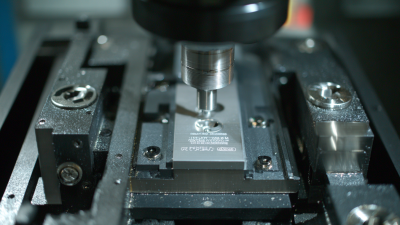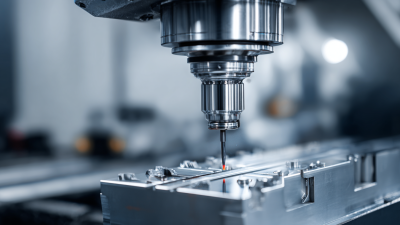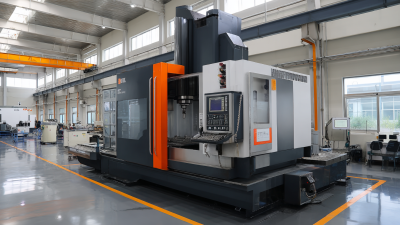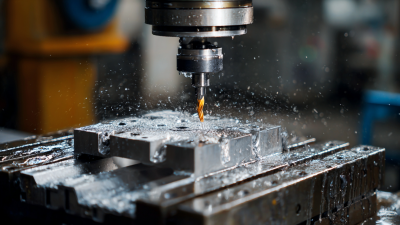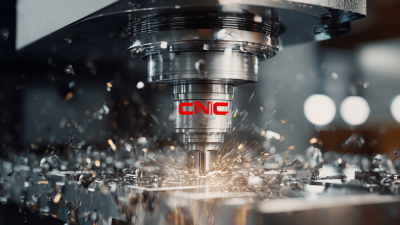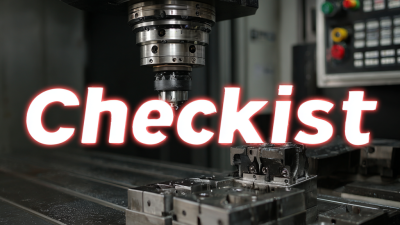
In 2024, the CNC milling industry is poised for significant transformation, driven by the rapid adoption of digital strategies that streamline operations and enhance supply chain efficiencies. According to a recent report by MarketsandMarkets, the global CNC machine market is expected to reach $100 billion by 2025, growing at a compound annual growth rate (CAGR) of 7.5%. As competition intensifies, manufacturers must leverage technology to optimize their supply chains and sustain profitability. By integrating advanced digital tools such as AI, IoT, and data analytics into CNC milling processes, companies can improve not only operational efficiency but also responsiveness to market demands. This blog will explore five key digital strategies that will help businesses enhance their CNC milling supply chain, ensuring they remain agile and competitive in an increasingly digital landscape.

In the rapidly evolving landscape of CNC milling, leveraging data analytics has become critical for streamlining supply chains. According to a recent report by McKinsey, companies adept at utilizing data analytics can see an increase of up to 20% in supply chain efficiency. By harnessing real-time data, organizations can make informed decisions that minimize waste, reduce lead times, and ultimately enhance overall productivity.
When implementing data analytics strategies, companies should focus on key performance indicators (KPIs) relevant to their supply chain. For instance, tracking metrics such as order fulfillment rates and inventory turnover can provide insights into areas needing improvement. Additionally, integrating predictive analytics can aid in forecasting demand, allowing for better resource allocation and risk mitigation.
**Tip:** Consider using cloud-based data analytics platforms that offer scalable solutions tailored for CNC operations. This flexibility can enable immediate access to crucial data for decision-making.
Moreover, investing in employee training on data interpretation can enhance the efficacy of analytics initiatives. A study by Deloitte highlighted that organizations with a data-savvy workforce are 3 times more likely to report revenue growth.
**Tip:** Implement regular workshops and training sessions focused on data literacy to empower your team in effectively leveraging analytics tools for decision-making.
| Strategy | Objective | Tools & Technologies | Expected Impact |
|---|---|---|---|
| Data Analytics | Identify trends and optimize production | Python, R, Tableau | Increased efficiency by 15% |
| Supply Chain Visibility | Real-time tracking of inventory and orders | IoT devices, ERP systems | Reduction in lead times by 20% |
| Predictive Maintenance | Minimize downtime of CNC machines | Machine learning algorithms | Decreased unplanned downtime by 30% |
| Supplier Collaboration Platforms | Enhance communication with suppliers | Cloud-based tools, B2B portals | Improved order accuracy by 25% |
| Automated Reporting | Streamline reporting processes | Business intelligence software | Time savings of 40% on reports generation |
Implementing cloud-based solutions in the CNC milling supply chain is becoming increasingly essential for businesses aiming to enhance collaboration and communication. A recent study by McKinsey indicates that companies embracing digital tools can boost productivity by up to 30%. This significant increase can be attributed to better visibility and real-time data sharing among supply chain stakeholders. By utilizing cloud platforms, companies can streamline operations, mitigate risks, and improve overall efficiency.
Tip: Ensure your team is trained to use the selected cloud solutions effectively. Regular training sessions can help staff fully leverage the technology, fostering a culture of continuous improvement within your organization.
Moreover, cloud technologies enable remote access to critical data, allowing teams to make informed decisions regardless of their location. According to a report from Deloitte, 58% of manufacturing firms have adopted cloud solutions to enhance their operational flexibility. Increased collaboration capabilities facilitate seamless communication across departments, leading to faster problem-solving and innovation in CNC milling processes.
Tip: Consider integrating collaborative tools such as project management software and communication platforms within your cloud infrastructure. This not only enhances transparency but also promotes faster turnaround times on projects.
In the rapidly evolving landscape of CNC milling, leveraging IoT technology stands out as a pivotal strategy to enhance operational efficiency. By integrating IoT devices into your CNC milling operations, you can obtain real-time data about machine performance, material usage, and overall workflow. This level of visibility allows for proactive decision-making, reducing downtime and improving productivity.
**Tip 1:** Implement sensors on your CNC machines to track key performance indicators (KPIs) such as temperature, vibration, and speed. This data can be analyzed to predict maintenance needs, preventing costly breakdowns and extending the lifespan of your equipment.
Moreover, IoT technology enables better supply chain coordination. With connected devices, manufacturers can monitor inventory levels and automatically reorder materials when they fall below a certain threshold. This not only ensures that production remains uninterrupted but also helps in managing costs more effectively.
**Tip 2:** Use an IoT-enabled dashboard to visualize your supply chain metrics in real-time. This tool can provide insights into trends and patterns, enabling you to make informed decisions regarding procurement and scheduling.
By embracing IoT technology, CNC milling operations can transition into a more responsive and agile model, paving the way for improved efficiency and reduced waste in 2024 and beyond.
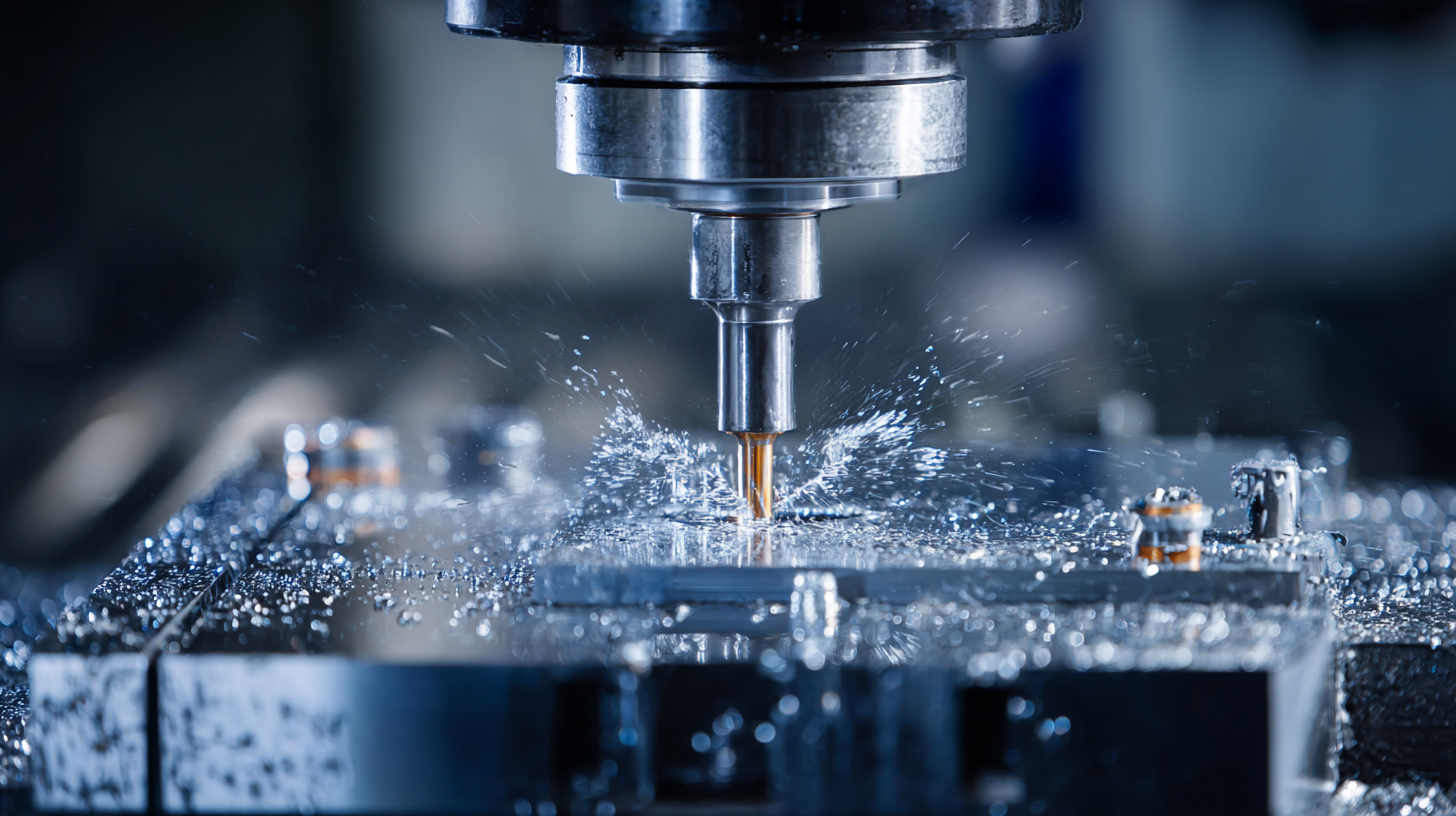
In the rapidly evolving landscape of CNC milling, automating inventory management stands out as a critical strategy for enhancing supply chain efficiency. By implementing advanced software solutions, manufacturers can streamline their inventory tracking processes, minimizing human error and reducing the time spent on manual data entry. This not only allows for real-time visibility into stock levels but also facilitates smarter decision-making regarding procurement and production scheduling.

Furthermore, automation provides the ability to set up inventory alerts and reorder triggers, ensuring that materials are available when needed without overstocking. This balance is particularly essential in the CNC milling industry, where precision and timing are paramount. Integrating these automated systems with existing supply chain processes can significantly enhance collaboration between suppliers and manufacturers, leading to improved response times and a more agile supply chain overall.
By prioritizing automation in inventory management, companies can achieve greater operational efficiency and responsiveness in 2024 and beyond.
The integration of Artificial Intelligence (AI) in CNC milling processes is revolutionizing the way industries manage predictive maintenance and resource optimization. According to a report by MarketsandMarkets, the AI in manufacturing market is expected to reach $16.7 billion by 2026, growing at a CAGR of 43.0%. This surge highlights a significant shift toward data-driven decision-making, allowing manufacturers to detect potential equipment failures before they occur. By leveraging AI algorithms, CNC milling operations can analyze vast amounts of data to identify patterns and predict when maintenance should be scheduled, thereby minimizing downtime and enhancing productivity.
Tip: Implementing IoT sensors in CNC machinery can provide real-time data for AI systems, allowing for more accurate predictive maintenance. These sensors monitor machine performance and alert operators to any irregularities, ensuring timely interventions.
In addition to predictive maintenance, AI also plays a critical role in resource optimization. By analyzing historical data and current usage patterns, AI systems can help manufacturers streamline their supply chain processes, leading to more efficient resource allocation. A study from McKinsey indicates that effective integration of AI can enhance supply chain efficiency by up to 50%. This means fewer bottlenecks and better inventory management, ultimately reducing operational costs.
Tip: Conduct regular training sessions for your team on AI tools and data interpretation to maximize the benefits of resource optimization strategies. Engaging your workforce in the digital transformation journey is key to successful implementation.
